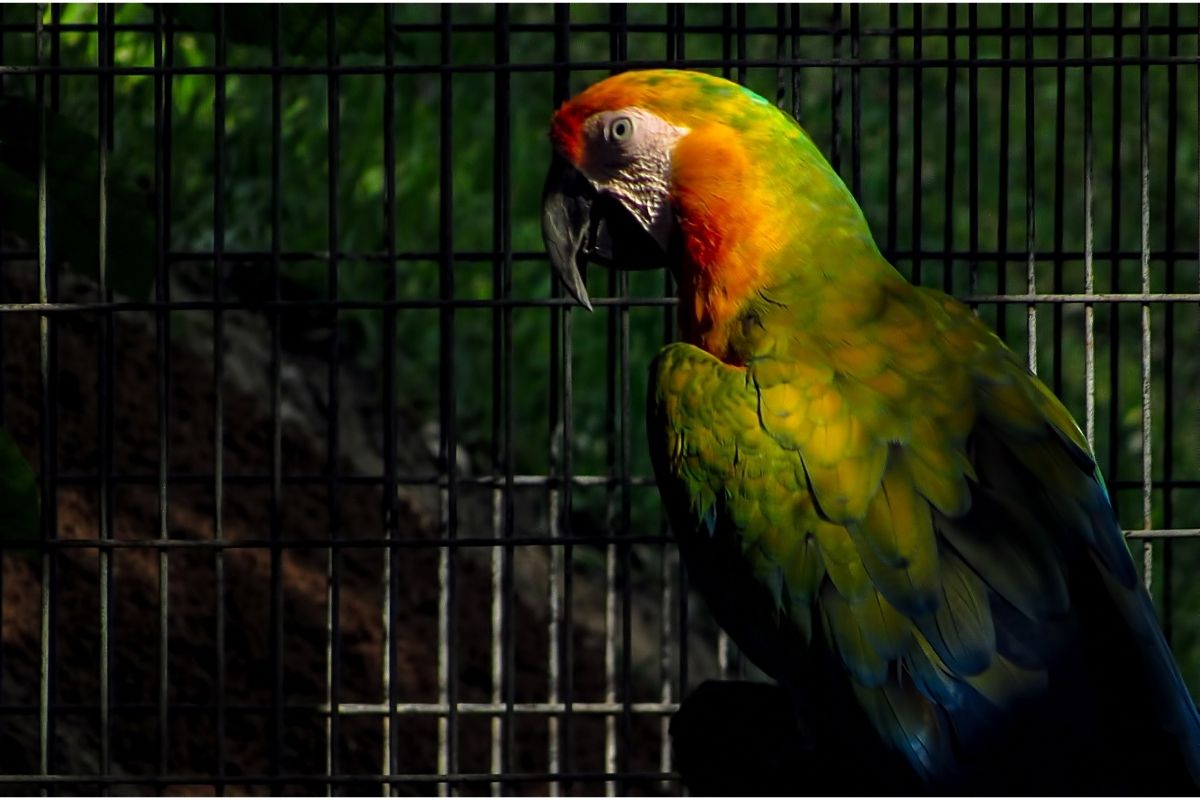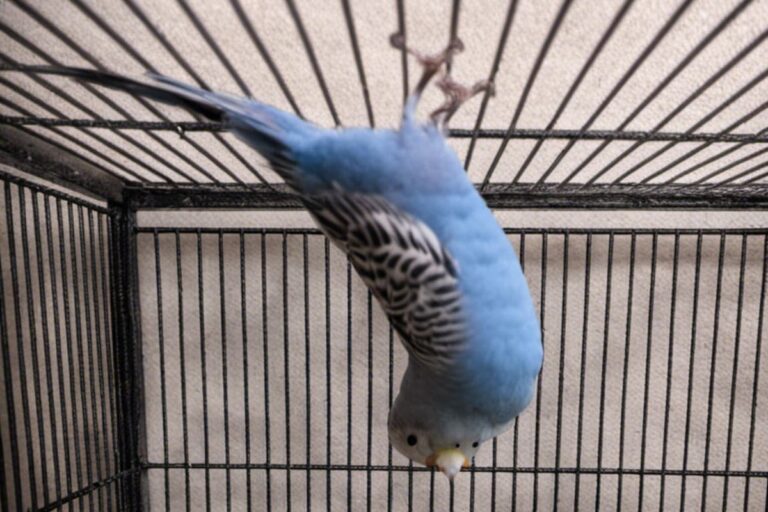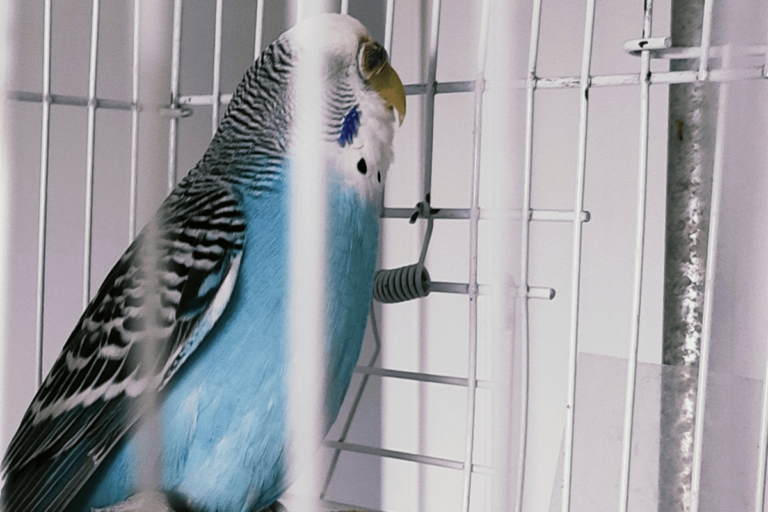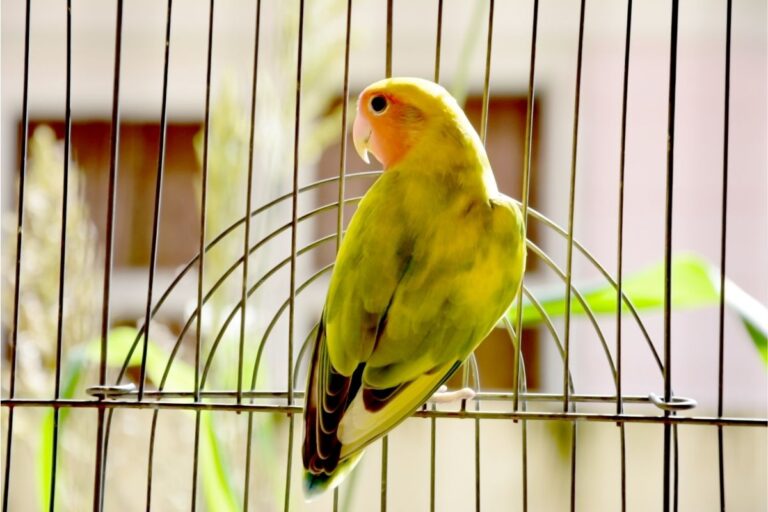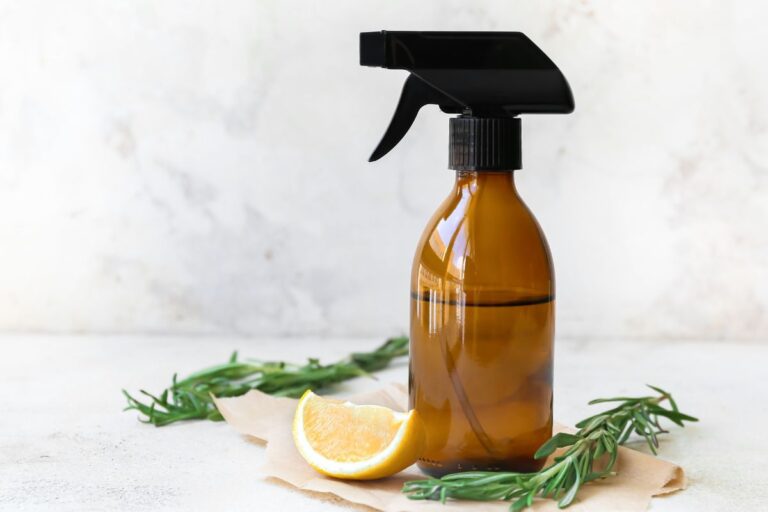Can a Cage be Too Big for a Bird
Disclosure: The opinions expressed in this post are my own. This post may also contain affiliate links, which means that I will receive a commission if you decide to purchase through my links, at no additional cost to you. As an Amazon Associate, I earn from qualifying purchases.
Cages are used to keep birds safe and comfortable while they are being transported. They also provide a place where the birds can rest and sleep.
Most of us should know that a cage can be too small for a bird, causing stress and discomfort, leading to health problems and injuries. However, is there a time where a cage is too big for a bird?
The Bigger, the Better
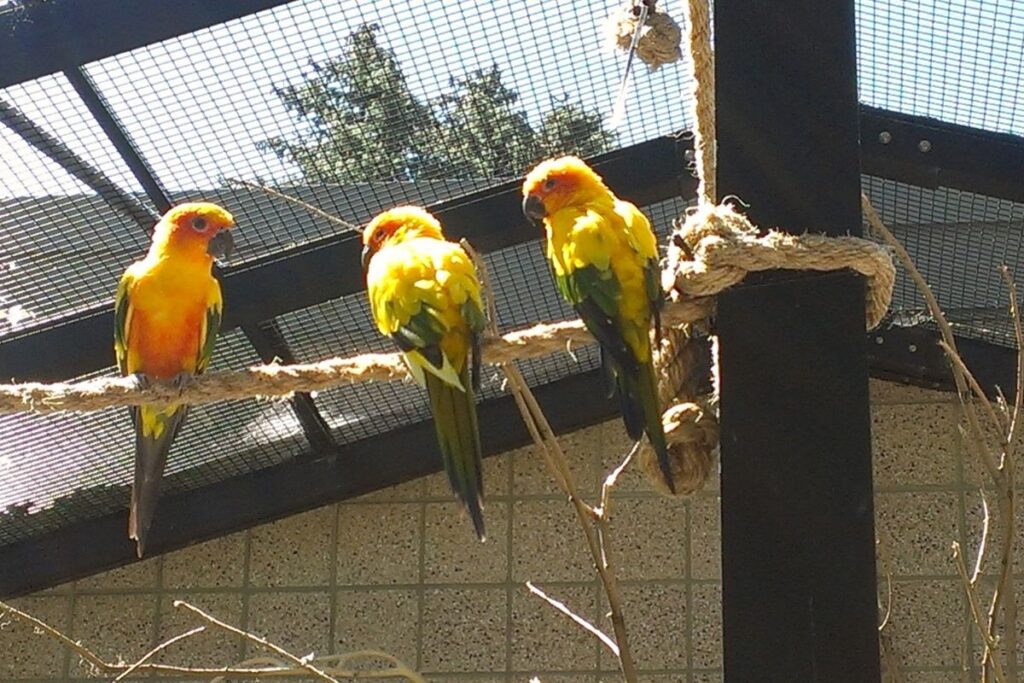
When it comes to cage size, always remember that the bigger, the better. By providing your birds with a bigger cage, you are giving them more space. Since your birds are kept in cages hours at a time every single day, it’s good to provide them with the most space possible for comfortable living. Many bird owners opt for the largest cage they can manage.
Minimum Cage Size
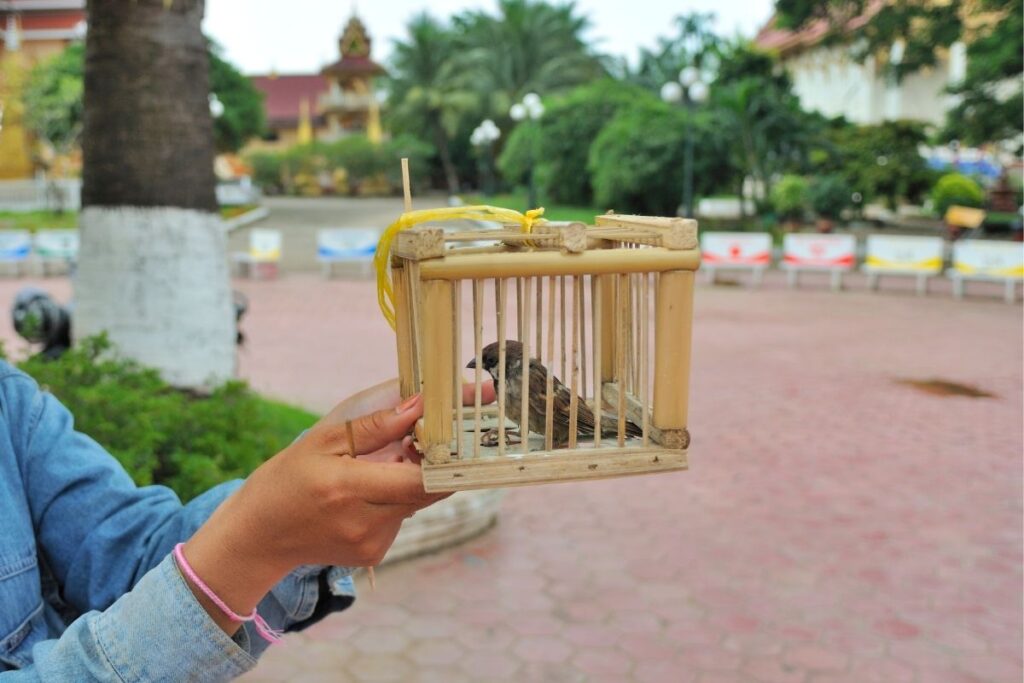
There are no guidelines on the maximum cage size, but there indeed is when it comes to the minimum size. Getting a cage that is too small for your bird is considered to many as being cruel. You would want your bird to be able to spread its wings and have a stretch whenever it wants to. You have to take into account both the height and diameter of the cage.
If you provide more room for your birds, they will be able to have more fun and exercise too. If you’re looking for something smaller than the recommended sizes, make sure to only use them for temporary purposes, such as during the cleaning of their main cage or for transportation.
It would help if you never compromised on the living conditions of your feathered friends. All caged birds need to be provided with an adequate amount of cage space to have enough area to move around and not damage their tails and feathers while doing so.
Using Aviaries
If you are looking for ways to reduce stress and anxiety in your pet, you should consider using an aviary instead of a cage. Aviaries are larger cages or enclosures that allow the birds to move around freely. Not all homes have the means of containing an aviary, mainly due to space constraints.
Aviaries come in different sizes depending on how much room your birds need. The smallest ones usually only hold two birds, whereas the largest ones will accommodate up to six birds and more. There are even some models that offer multiple levels so that the birds don’t feel cramped.
If you do not have the means to buy or accommodate an aviary at home, a cage is still acceptable. What matters is the size of the cage being adequate for your birds.
Consider the Cage Bar Spacing
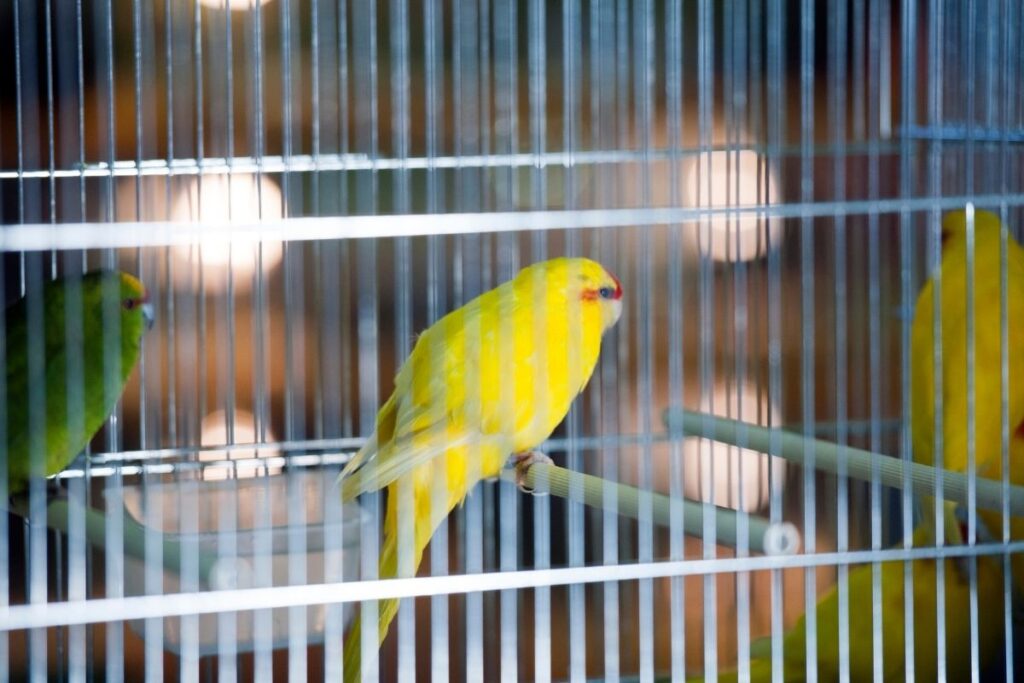
Other than the cage size, it is important also to note the cage bars’ spacing. Larger cages are typically designed for larger birds. So it is normal to see the larger spacing between the cage bars as well. If you intend to put your smaller sized birds (finches, canaries, etc.) in a cage meant for larger birds (cockatoos, macaws, etc.), they may be able to escape through the spacing. They may also get injured, stuck or, worst, suffocate while doing so.
Here is a table of the recommended cage bar spacing for different types of commonly owned pet bird species:
| Species | Recommended Cage Bar Spacing |
| Canaries | 1/4″ to 1/2″ |
| Finches | 1/4″ to 1/2″ |
| Cockatiels | 1/2″ to 5/8″ |
| Lovebirds | 1/2″ to 5/8″ |
| Parakeets, Budgies | 1/2″ to 5/8″ |
| Parrotlets | 1/2″ to 5/8″ |
| Caiques | 5/8″ to 3/4″ |
| Conures | 5/8″ to 3/4″ |
| African Grey Parrot | 3/4″ to 1″ |
| Amazon Parrot | 3/4″ to 1″ |
| Cockatoos (Small) | 3/4″ to 1″ |
| Mini Macaws | 3/4″ to 1″ |
| Cockatoos (Large) | 1″ to 1.5″ |
| Macaws (Large) | 1″ to 1.5″ |
Pros of Having a Large Cage
Having a large cage has its advantages for your birds. Let’s go through some of the benefits.
More Room to Move About and Spread Their Wings
More space means that your birds have more room to move around and spread their wings, which helps with their happiness and prevents stress due to poor living conditions.
In fact, there is also something called a flight cage, which is a cage that is large enough for your birds to fly around with ease. These kinds of cages are typically built for smaller birds such as parrotlets and finches.
Flexibility to Add in Companion Birds
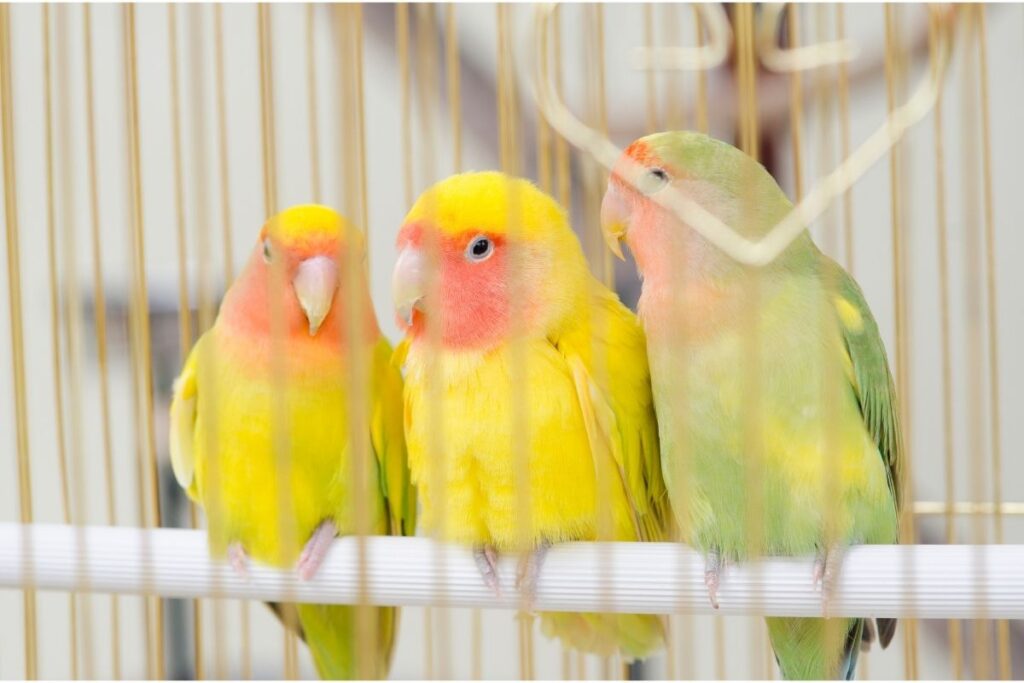
It’s pretty straightforward to understand that a bigger cage is required if you have more birds in it.
With a larger cage, there’s always the flexibility to add in a companion bird or two, without the need to get a separate cage.
If you intend to introduce a companion bird down the road, it may be a good idea to get a larger cage from the start so that you don’t have to go through the hassle of changing cages.
Less Frequent Cleaning Up
A larger cage means that the mess created by your birds will not be concentrated in a small area but spread out across the entire cage. You no longer have to clean up as frequently as compared to a small cage. You are freeing up more of your time to interact with your birds instead.
However, this does not mean that you can neglect cleaning your birds cage for long periods of time. Your cage still needs to be cleaned fairly frequently.
Cons of Having a Large Cage
The disadvantages are mainly towards the bird owners rather than the birds themselves. Having a larger cage may come at an expense to you.
Slightly Tedious Cleanup
Although you need not clean up the cage as frequently, the cleaning itself is more tedious as there is a larger area to cover. Keeping your birds’ cage clean is essential as you do not want them to be stepping around their food and droppings.
You should also have a very thorough cleaning of the cage at least once a month. This involves scrubbing and rinsing the entire enclosure.
Taking Up More Space
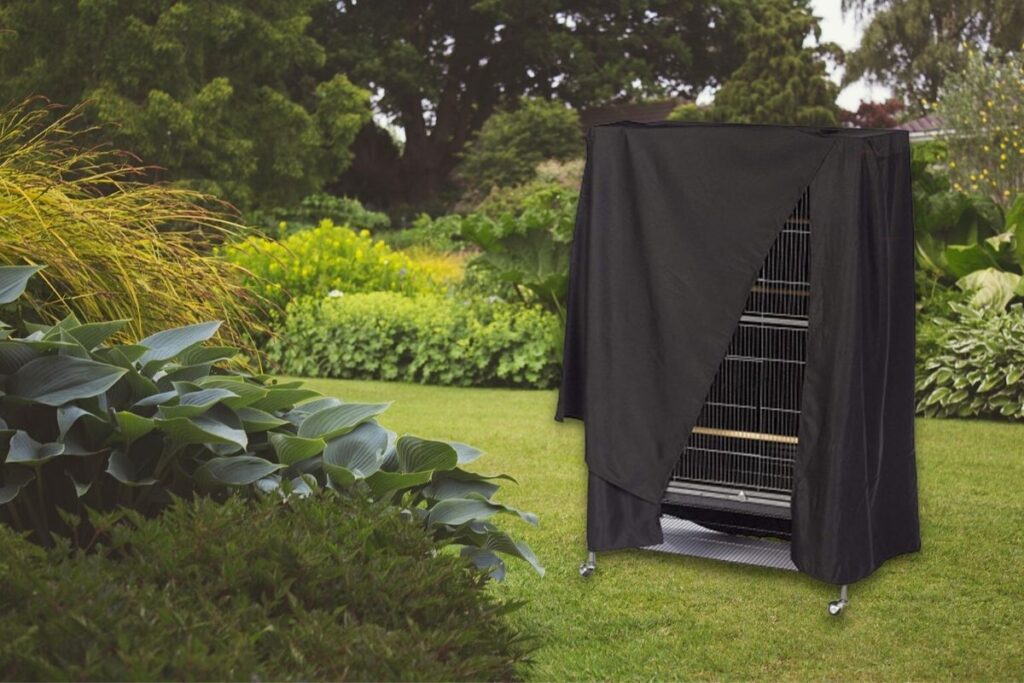
The larger your birdcage is, the more it will creep into your own living space. This may not be such a big issue if you have a big house or separate areas to house your birds. However, if you live in a smaller home like an apartment, you may start to feel that a huge cage occupies a lot of your precious real estate. Many apartment stayers opt for a smaller cage being elevated off the ground instead.
More Tips on Large Cages
If you are using or planning to use a large cage to house your feathered friends, here are some additional tips for you.
Providing Perches
Your birds will love having perch available to sit upon while they eat, play, sleep, etc. A few simple wooden sticks placed strategically throughout the cage will help provide these opportunities.
Make sure that the height of the perch matches the size of your bird. For example, if you plan to put a perch next to where your bird eats, make sure that the perch is tall enough for it to comfortably reach its mouth.
Keeping Cage Clean
As mentioned earlier, keeping your bird’s cage clean is essential. The same goes for any other pet owner who has pets. Keeping your bird’s cage clean helps prevent diseases and parasites from spreading among your flock.
Cleaning your bird’s cage regularly, especially the bedding (whether it’s made out of paper or wood shavings), ensures that all parts of the cage remain sanitized. As well, regular cleaning prevents bacteria build-ups within the cage.
Having Daily Exercise Out of the Cage
It is recommended that you allow your birds access to daily exercise outside of the cage. Birds enjoy playing games together and flying about. These activities promote mental health and physical fitness. They also ensure that your birds get plenty of fresh air, which is necessary for good overall health.
Takeaway
While a larger cage provides many benefits, it comes at a price. Most bird owners are more than happy to make minor sacrifices for the well-being of their pet birds. Make sure that you weigh the pros against the cons before deciding whether or not to purchase one.



